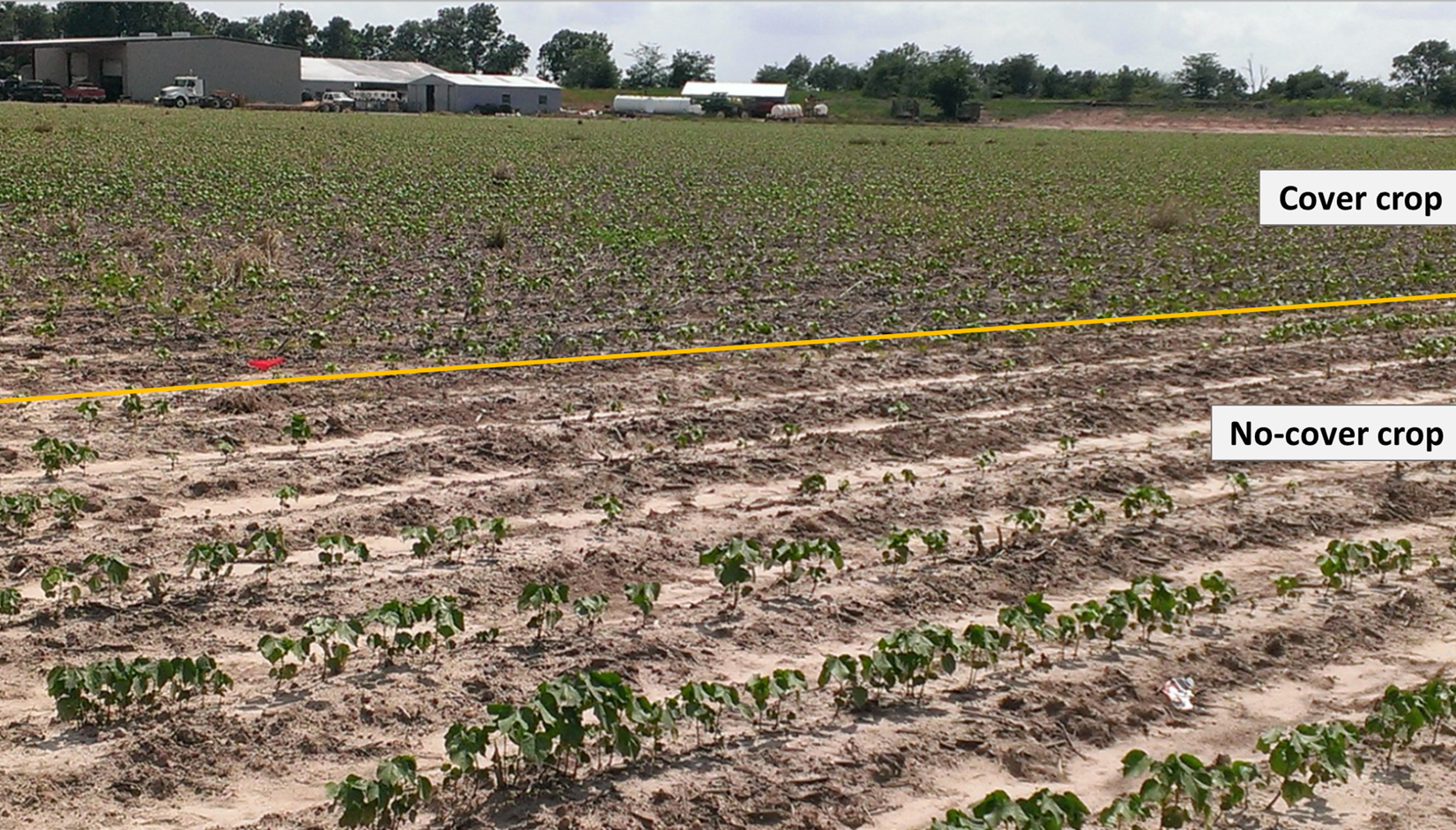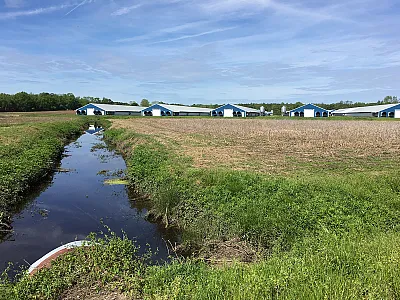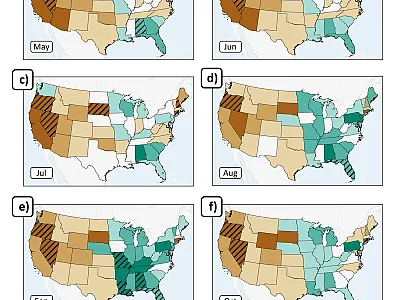Cover crops reduce effects of wheel compaction in soil under cotton production

Conventional farming relies on heavy farm machinery for large-scale production. However, repetitive wheel pressure, axle load, and vibration from that farm machinery can cause soil compaction that negatively impacts soil properties, such as soil bulk density, porosity, and aggregation. Cover crops are a way to add organic matter to the soil, an essential component of improving bulk density and of increasing porosity at the soil surface and water-stable soil aggregates to reduce potential losses of rainfall, nutrients, and soil. Despite the benefits cover crops have on soil health, they remain an under-utilized production management resource in the Lower Mississippi River Valley region of southeast Arkansas.
Researchers at the University of Arkansas analyzed a production system that uses cereal rye cover crop in tandem with dedicated wheel-track furrows within a cotton field to improve overall soil health and reduce the negative effects of soil compaction. Results from the study showed that the cover crop provides additional above- and belowground biomass to the soil to lower soil bulk density and increase water-stable soil aggregates while dedicated no-wheel-track furrows allow for increased soil water storage.
This small-scale study provides valuable insight into benefits that blended management practices have on soil health.

Dig deeper
Lebeau, S. G., Brye, K. R., Daniels, M., & Wood, L. S. (2024). Cover crop and wheel-track effects on soil properties under cotton production in eastern Arkansas. Agrosystems, Geosciences & Environment, 7, e20549. https://doi.org/10.1002/agg2.20549
Text © 2025. The authors. CC BY-NC-ND 4.0. Except where otherwise noted, images are subject to copyright. Any reuse without express permission from the copyright owner is prohibited.







